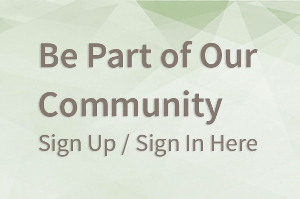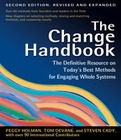BK Blog Post
Appreciative Inquiry - What's It All About?
 Posted by
David Marshall,
Vice President of Editorial and Digital ,
Berrett-Koehler Publishers Inc.
Posted by
David Marshall,
Vice President of Editorial and Digital ,
Berrett-Koehler Publishers Inc.
David Marshall heads the editorial department, which is responsible for 40-50 new titles per year and 5-10 digital products or initiatives.
This article, taken from The Appreiciative Inquiry Handbook, gives a good introction of how this change method works both in theory and practice.
The Focus of Appreciative Inquiry (AI)
AI is a philosophy that incorporates an approach, a process for engaging people at any or all levels to produce effective, positive change. Currently, AI is used throughout the world in both small- and large-scale change initiatives. It has been used as an adaptable change method in combination with other organizational processes such as strategic planning, coaching, leadership and management development, redesign of structures and systems, mergers and acquisitions, cultural transformation, team building, valuing diversity, and social and sustainable development issues.
Appreciative inquiry is an exciting way to embrace organizational change. Its assumption is simple: Every organization has something that works right--things that give it life when it is most alive, effective, successful, and connected in healthy ways to its stakeholders and communities. AI begins by identifying what is positive and connecting to it in ways that heighten energy, vision, and action for change.
AI begins an adventure. Its call to adventure has been experienced by many people and organizations, and it will take many more to fully explore this emergent paradigm. Current practitioners and organizations sense an exciting direction in AI's language and theories of change; they sense an invitation to "a positive revolution."
The words positive revolution were first used by GTE (now Verizon) to describe the impact of years of work to create an organization in full voice, a center stage for a positive revolution. Based on significant and measurable changes in stock prices, morale survey measures, quality/customer relations, union-management relations, and so on, GTE's whole system change initiative XVI Appreciative Inquiry Handbook was given professional recognition by the American Society for Training & Development (ASTD). GTE won the National ASTD award for best organization change program in the country. AI was cited as the backbone of that change.
AI has exhibited staying power and longevity within organizations such as Hunter Douglas, Tendercare, British Airways, and Roadway/Yellow Trucking. Recently, the AI process has undergone change, particularly in the Design phase, where the concept of altering an organization's "social architecture" has been somewhat refined and broadened, consistent with the broader notions of design as a discipline.
Approach of the Handbook
This book provides an approach to launching an AI initiative. It is written to help people and their organizations take a long-term view of current activities and to achieve positive results by involving stakeholders. AI has proven to be a positive experience of a new way of living and organizing at work. Through the 4-D Cycle, people can transform the present state of their organization into a future state by building on a "positive core" of strengths to create its destiny. AI is an engaging participative process that, once begun, moves quickly to remarkable results.
Audience
This book is for trainers, executives, consultants, and students who want to be catalysts for organizational and social change. AI has been used by senior executives, line and staff managers, specialists in human resources and organizational development, leaders of nongovernmental organizations, and union management teams.
The book is designed for those familiar with AI and its potential, as well as for those just beginning to explore the possibilities of AI.
The first edition of this book has been a valuable resource in many MBA and doctorate programs in business, organizational development, organizational behavior, and human resource development. This second edition also serves the needs of students who will be leading strategic change efforts, as well as practitioners.
Because the AI focus is innovation and creativity, its effectiveness is not limited to organizations of a particular type, size, demographic, or industry. Both for-profit and nonprofit organizations have found AI to be effective, and it works equally well at all levels of an organization. AI is ideal for anyone who wants to be part of a positive revolution in change.
To be effective, business leaders need to move away from the traditional problem-solving approach to organizational change and move toward viewing organizations as a mystery to be embraced. AI provides a fresh approach to organizational change that motivates all stakeholders to contribute to the organization. When an organization uses AI to solve problems, embrace challenges, create opportunities, make decisions, and initiate action, the whole system works toward a shared vision.
AI is a powerful approach to positive change. The process is simple, and it can engage everyone in the organization. Through collaborative inquiry and a connection to their positive core, many organizations have cocreated whole systems processes to:
- Create a common-ground vision and strategy for the future.
- Accelerate organizational learning--speeding the spread of innovation and amplifying the power of even the smallest victories.
- Unite labor and management in new, jointly envisioned partnerships.
- Create dialogue to foster shared meanings.
- Improve communications.
- Strengthen implementations of major information technology
- changes.
- Work toward sustainability.
- Demonstrate positive intent and trust with stakeholders.
- Build dynamic relationships and high-performance teams to facilitate change.
AI can revitalize virtually every process or program that may have been deficit-based, such as quality programs, focus groups, surveys, and reengineering efforts. AI is important because it works to bring the whole organization together to build on its positive core, one that allows for engagement in both transactional (action planning) and/or transformational change (valuesvision-mission identification and alignment). AI encourages people to work together to promote a more complete understanding of the human system, the heartbeat of the organization.
If you would like to hire Appreciative Inquiry experts to consult, train, or speak at your company, non-profit, or government organization, please visit The BK Expert Directory where you can engage with our authors.





